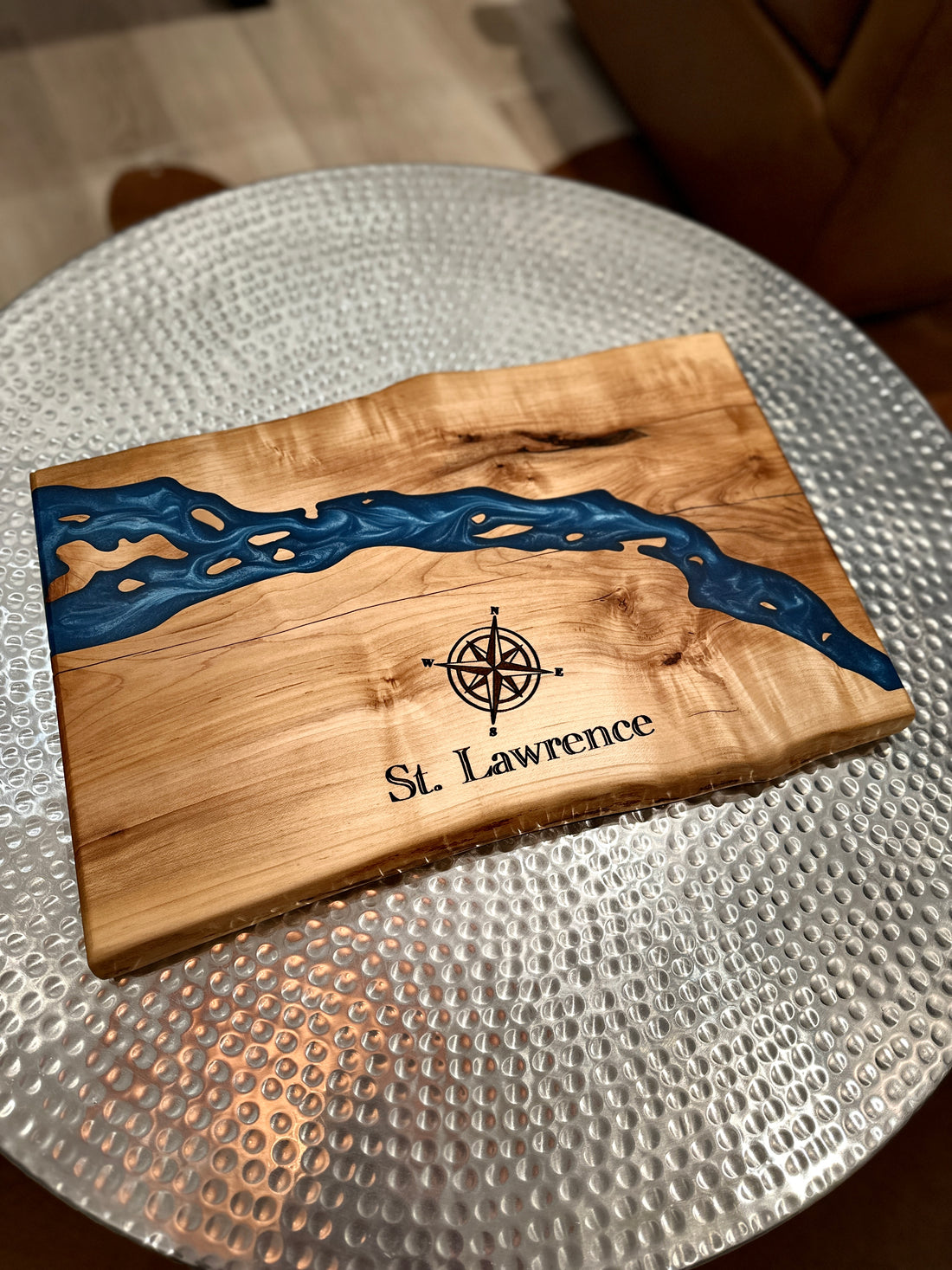Serving boards, whether made of hardwood or epoxy, add an elegant touch to any dining experience. However, to ensure their longevity and maintain their beauty, proper care is essential. Regular cleaning and oiling not only keep them looking their best but also help preserve their quality. In this guide, we'll delve into the detailed steps for carefully cleaning and oiling both hardwood and epoxy serving boards.
Understanding Your Serving Boards: Before diving into the cleaning and oiling process, it's crucial to understand the material of your serving boards.
-
Hardwood Boards:
- Hardwood serving boards are typically made from woods like maple, walnut, or cherry.
- They offer durability and a natural aesthetic.
- Hardwood boards require regular oiling to prevent drying out and cracking.
-
Epoxy Boards:
- Epoxy serving boards feature a blend of epoxy resin and wood.
- They are known for their striking designs and vibrant colors.
- Epoxy boards are generally more resistant to stains and moisture but still require care to maintain their appearance.
Cleaning Process:
-
Hardwood Boards:
- Start by scraping off any food particles or residue using a spatula or scraper.
- Use a damp cloth with mild dish soap to wipe the surface gently. Avoid soaking the board in water as excessive moisture can damage the wood.
- For stubborn stains or odors, create a paste of baking soda and water. Apply the paste to the affected area and let it sit for a few minutes before rinsing.
- Once clean, wipe the board dry with a clean towel and let it air dry completely before oiling.
-
Epoxy Boards:
- Similar to hardwood boards, begin by scraping off any food remnants.
- Use a soft cloth or sponge with mild dish soap to gently clean the surface.
- Avoid abrasive cleaners or scrubbers that could scratch the epoxy surface.
- Rinse the board thoroughly with water to remove any soap residue.
- Pat the board dry with a clean towel and allow it to air dry completely.
Oiling Process:
-
Hardwood Boards:
- Once the board is completely dry, apply a food-safe mineral oil or butcher block conditioner using a clean cloth.
- Spread the oil evenly over the entire surface, including the sides and edges.
- Let the oil penetrate the wood for about 20-30 minutes.
- Wipe off any excess oil with a dry cloth.
- Allow the board to rest for a few hours or overnight to allow the oil to fully absorb before using it again.
-
Epoxy Boards:
- Unlike hardwood boards, epoxy boards do not require oiling for maintenance.
- However, applying a thin coat of food-grade mineral oil to the wood portions can help restore shine and protect the wood.
- Use a clean cloth to apply the oil sparingly to the wood areas only, avoiding contact with the epoxy resin.
- Wipe off any excess oil and allow the board to dry completely before use.
General Tips:
- Avoid exposing serving boards to extreme temperatures or prolonged sunlight, as this can cause warping or fading.
- Never submerge wooden serving boards in water or run them through the dishwasher, as this can cause damage.
- Store serving boards in a dry, well-ventilated area when not in use to prevent mold or mildew growth.
- Regularly inspect serving boards for any signs of wear or damage, such as cracks or splinters, and address them promptly.
Conclusion: Proper care and maintenance are essential for extending the lifespan and preserving the beauty of your hardwood and epoxy serving boards. By following these detailed cleaning and oiling steps, you can ensure that your serving boards remain in pristine condition, ready to elevate any dining experience for years to come.

